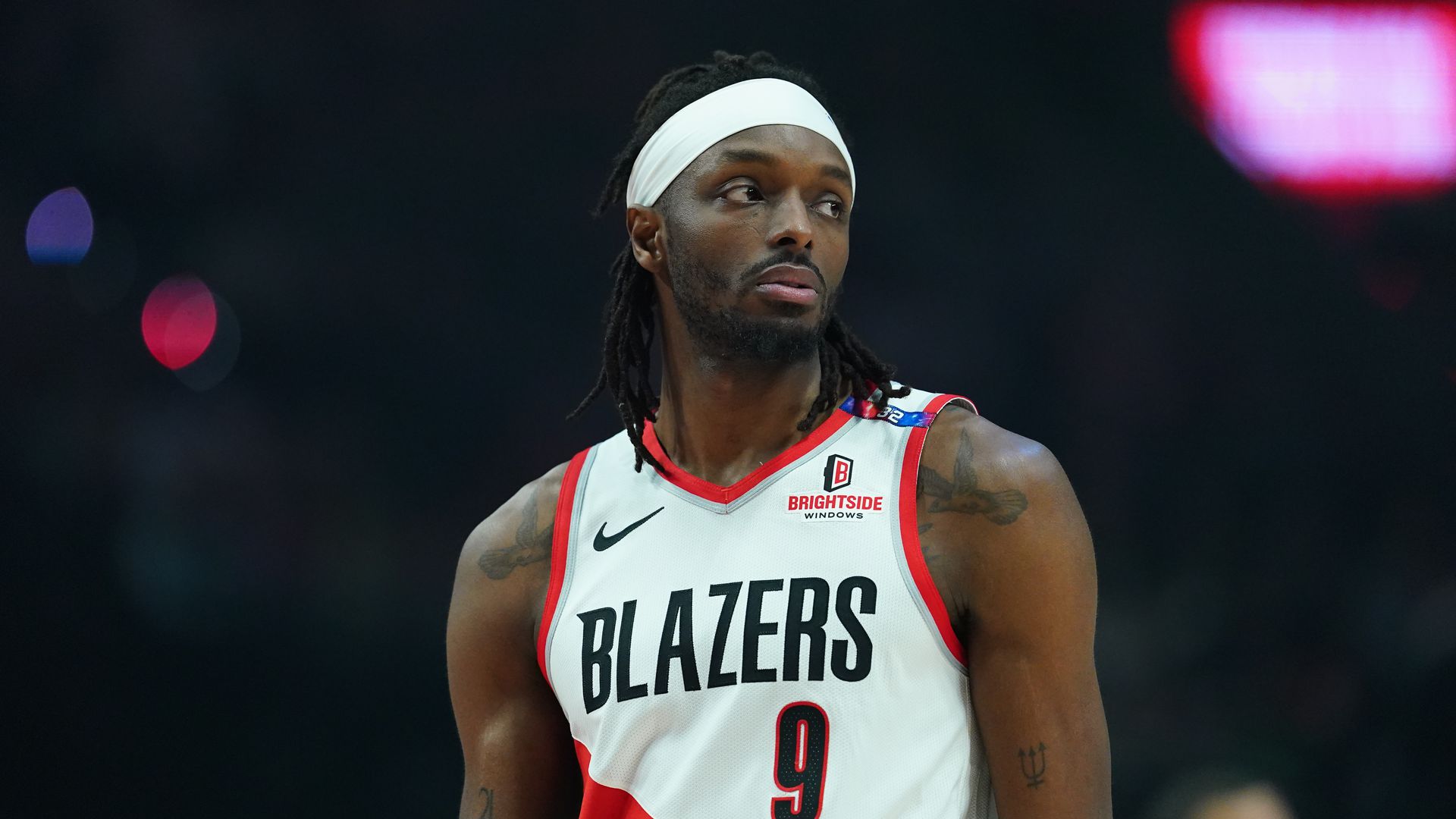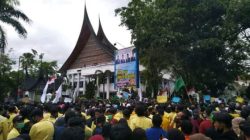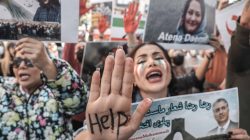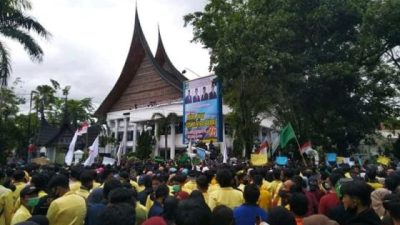The
Portland Trail Blazers
are an improving team, but far from a finished product. Knowing their franchise is in transition—a couple seasons into a rebuild, a couple more from relevancy—Blazers fans are highly interested in the NBA trade market. The
NBA Draft
may be the most cost-effective and perpetually-available way to improve a roster, but no avenue offers a quicker approach to growth than trades. As such, the Blazer’s Edge Mailbag is full of potential deals, night and day, pretty much 24/7.
We’ll discuss specific questions about trades as the summer goes along, but as a helpful tip, we’re going to address trades in general in this quasi-mailbag, pre-trade post. Instead of pursuing a proposed swap for a specific player, let’s address a crucial preliminary matter: how valuable are Portland’s players to begin with? The first requirement of stepping to the trade table is having something to offer. How much can the Blazers pack along to negotiate with?
Let me start out by saying that this post is likely to annoy the true faithful contingent of Blazers fandom. Supporters tend to love their own players. They also start and end with the presumption that a trade is going to make their team better (as opposed to resolving issues, saving money, or other potential trade outcomes). That means most fan proposals are overblown. We inflate the value of incumbent roster members. We create reasons why opposing teams will want to dump their most valuable assets. Somewhere in the middle there we find a trade that might barely pass muster on the most perfectly sunny day when half the participants are drunk.
That doesn’t work in the actual NBA, where careers are on the line and multiple parties scrutinize, then dissect, each deal. Professionals look at players with a critical eye, not just a wishful one.
Valuations may vary. We’re not going to pretend we know what each General Manager across the league thinks of each Blazers player. But in general, these assessments are going to be more realistic than hopeful, simply because the people potentially swapping with the Blazers will look at things that way. If that falls short of our valuation dreams as fans, so be it, at least for today.
What value do the Blazers have in pocket? Let’s take a look.
The End of the Bench
The Blazers have a few players at the end of the bench, possible darkhorses for trade consideration. Think Rayan Rupert, Kris Murray, Duop Reath. This group has two advantages: they’re mostly young and they’re all inexpensive. None of them have the track record to recommend them beyond that, though. The Blazers don’t have a diamond in the rough waiting for exposure. They do have a stockpile of potential throw-ins if they need a couple million dollars in salary to make an exchange work.
The Time’s Up Crew
Portland has three players with contracts in flux this summer: Matisse Thybulle, Jabari Walker, and Dalano Banton. Each is in a different contractual state.
Banton is an unrestricted free agent, free and clear. The Blazers could re-sign him of course. A sign-and-trade following would be an open option. But Banton isn’t a major enough player to justify either a significant salary or notability as a trade target for other teams. It’s likely Portland’s decisions will happen on the merits of his contributions alone, not on any trade considerations.
Walker is a restricted free agent. The Blazers could offer him a new contract or make him a qualifying offer of about $2.7 million, either keeping him for one more year at that price or watching him hit the market and then matching his ensuing salary offer from another team. Portland has slightly more control over Walker’s future than they do over Banton’s. The final story is similar, though. If they need Walker in an eventual trade scenario, they can probably make use of him by resolving a new contract. He’s not the kind of player who would command trade attention organically.
Thybulle is a more interesting case. He has a player option for the 2025-26 season worth $11.5 million. He’s also a dependable rotation player when healthy with defensive skills that can translate to most any lineup. That makes Thybulle one of the few Trail Blazers players with a defined skillset, a solid track record, and a middle-range salary…all indicating flexibility on the trade market.
The Blazers will be over the cap next year whether or not they retain Thybulle. It’ll be good for them if Thybulle picks up his option, playing out the final year of his contract. They’ll still be able to generate cap space next summer if they need it. In the meantime, he becomes one of their most likely trade candidates. He’d allow them to salary match with a contract that it’d take 4-5 end-of-bench players to match, but is only
1
⁄
2
to
1
⁄
3
that of their more expensive veterans.
As such, Thybulle is the big player to underline in the “valuable trade asset” category, not so much for his play or talent, but because of his contract condition. Provided he picks up that option year and doesn’t go for a longer deal in free agency, of course.
The Untouchables
Nobody is truly untradeable on a 36-win team, but Deni Avdija and Toumani Camara come close. Both have defensive chops, Camara at an All-NBA level. Avdija is the archetype of players succeeding in the NBA in the Year of Our Lord 2025. The Blazers acquired them with high hopes. Both have paid off. Unless something odd happens, the front office isn’t going to be looking to move them.
The remote possibility of trading Avdija or Camara shrinks to almost nil when you consider than both are playing on incredibly favorable contracts. Camara will make $2.2 million next year as an every-game starter. Avdija is owned $14.4 million—the rate of a mid-level cap exception—but his contract
shrinks
over the next two seasons. You’ll hardly find a bigger pair of bargains in the league outside of superstars on rookie-scale contracts.
That’s pretty much what it’d take for either forward to come under trade consideration. If the
Milwaukee Bucks
decided to part with Giannis Antetokounmpo and required one of the pair as a throw-in, the Blazers would surely talk about it. Short of getting a true star in return, Deni and Toumani aren’t going anywhere.
The Lottery Trio
The Blazers have retained three players selected with recent lottery picks: Shaedon Sharpe, Scoot Henderson, and Donovan Clingan. All have the benefit of drawing low salaries compared to their potential. None of the three has demonstrated unquestionable reliability to this point in their careers. That conundrum hazes up any trade talk involving them.
Sharpe is a hyper-athletic scorer with the potential to unleash ferocious dunks on a moment’s notice. His defense is average, his ability to score in varied fashion and conditions remains unproven.
Henderson is built like a linebacker and can get to the rim if he gets his shoulder half an inch past a defender. He’s shown improvement between his rookie and second seasons but he’s still not a true point guard nor a true point-scorer.
Clingan has a huge body. He’s a shot-blocker and rebounder near the rim. He’s not a scorer at all and his mobility may hamper him in wide-ranging defensive schemes.
In all three cases, beauty is in the eye of the beholder. An opposing GM who needed more youth and athleticism could value Portland’s young guards. They both have room to grow. They might end up being impact players. But nobody who wants instant results—nobody who’s risk-averse—is going to go out of their way to pick up any of these players. Nor would anyone trade premium draft capital for them. At best Portland could hope for a reset on the picks spent, just lower in the first round.
That narrows down the scenarios in which the Blazers would be able and willing to move these three. The only one that makes sense is one (or more) of the trio becoming the second player in a bigger-salary trade, an exciting bonus for the recipient but not the main reason the trade is executed. Outside of that, Portland is likely to find more value in these young players—via potential and cheap salaries—than a trade partner would.
The Veterans
Having run through the rest of the roster, we’re now left with three veterans, each with accompanying variables. They are Jerami Grant, Anfernee Simons, and Deandre Ayton.
Of the three, Grant is definitely the most accomplished and dependable. Or at least he was until this season. He’s been a 20-point scorer. He can defend. He covers the court and can jump. He’s got veteran savvy. He’s a fine all-around player. But he just came off maybe the worst season of his career, shooting unmentionable percentages, scoring like a journeyman instead of a star, and playing only 47 games.
Grant also has one of the longest-running and most expensive contracts on the team. He’s owed almost $103 million over the next three years.
That combination is going to make him a liability on the trade market until he’s shown that he can return to his pre-2025 form. The Blazers would likely have to throw in assets to get another team to take Grant rather than receive them. They don’t need to do that. They can ride out his deal and still generate cap space by dumping other players if they so desire. Unless some kind of sweetheart move happens, Grant is likely to be with the Blazers at least until the next trade deadline.
Like Grant, Simons is capable of scoring 20 per game. He’s a good offensive player but his three-point shooting hasn’t turned out as amazing as his early career promised. He’s also not a defender. Nor is he the Jalen Brunson type of scorer who can make up for the lack. That means he won’t be valued like a star despite his relatively young age (26) and modest contract ($27.5 million).
Simons would provide a good boost for any team needing offensive help, either in the starting lineup or from the first guard off the bench. His contract is expiring. That offers potential for the Blazers to use him as the main player in a trade where they take back big salary. Neither he nor any combination with him in it will bring back a true star. But Portland does have the capacity to absorb a bad contract coming back for Simons plus a young and promising player alongside.
This also holds true to a lesser degree for Ayton. He has all kinds of skills but has never put them together. He’s a good player, short of star potential. Despite the glitter following him as a former first-overall draft pick, he’s a middle-range starting center and that’s it. That’s how he’ll be valued on the market.
Like Simons, Ayton’s deal is expiring next summer. His salary is $35.5 million, though. Any contract coming back in return would be
really
large. That’s going to make moving him for bad contract even harder, as Portland would be swallowing a big pill.
The best hope for a trade involving one of these players is that somebody really values their particular combination of skills and talent. The next hope: somebody wants expiring contracts. Both of those things are rare, though. Teams want guards who play defense. Middling centers are not hot properties in today’s NBA. Nor do they want 3-and-D forwards without the threes.
Jerami Grant returning to his 40% three-point shooting form would sure help Portland’s trade prospects. Failing that, the Blazers are going to have to thread needles with particular teams to get a deal done. It’s not likely other franchises will be beating down the doors for their veterans.
Conclusion
In the spectrum of retail outlets, the Blazers lie somewhere between Big Lots and Best Buy. They’ve got a few assets but none of them are that remarkable, save the two they probably won’t trade. They’re certainly light years from Yves St Laurent and the high-end designer boutique world.
Portland can get deals done, I’m sure. But it’s likely those would be modest: combining Thybulle and a young player for some kind of hopeful mid-veteran prospect. The home-run, star-laden swing seems out of reach.
No matter how much draft capital the Blazers have, they’re making up for the players they’re sending out rather than relying on and augmenting them. A team like the New Orleans Pelicans might be willing to send out a good player in exchange for future draft picks and swaps, plus some current salary ballast. Whether Portland could make the best offer on the market in that scenario remains to be seen. Keep in mind that the
San Antonio Spurs
, Oklahoma City Thunder, and
Utah Jazz
hold more future draft assets than the Blazers do. They probably have better players to offer as well.
If the Blazers want to chase Dejounte Murray or start pestering the
Toronto Raptors
about Brandon Ingram, they might have the chips to push onto the table. That’s likely the maximum possible “big name” return they could dream of. Short of that, it’ll be another summer of lower-profile moves, more smart than splashy.
The dream of what Portland’s players could be exceeds their actual production and track record right now. That’s going to depress their value on the market. Waiting until more players are on the upswing, searching for the chance to sell high, might be a smarter move for Joe Cronin and company than trying to go all-in this summer.












